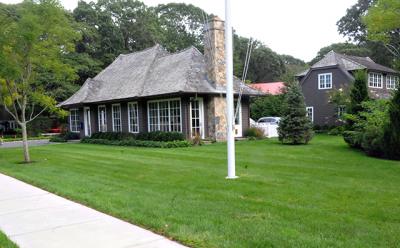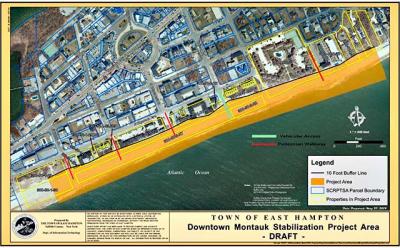New Decking Is in Limbo
New Decking Is in Limbo
The Ocean Colony Beach and Tennis Club, which occupies a six-acre site east of the Lobster Roll restaurant on Napeague, wants to enlarge all but one of its units’ decks, but needs an East Hampton Town Zoning Board decision before it can proceed.
The resort has appealed a determination by Dan Casey, a building inspector who is no longer with the department, that enlarging the decks would constitute an expansion of use. On Sept. 22, the zoning board debated for almost two hours about whether it does or does not; meanwhile, the resort’s application to the town’s planning board is stalled.
Although there are a number of motels and three restaurants in the eastern half of Napeague, the area is zoned not for resort use but for residences. The businesses predate the coming of zoning, which allows them to continue to operate.
According to a memo by JoAnne Pahwul, the town’s assistant planning director, Ocean Colony is seeking to expand 39 of 40 decks from 78 square feet each to 112.
Jonathan Tarbet of Tarbet & Lester, representing the Ocean Colony, told the zoning board that there were “15 years of precedent allowing certain accessory structures” to consider. He pointed to two Montauk sites as examples, Ruschmeyer’s on Second House Road and East by Northeast on Edgemere Road, which are both in residential zones.
The late Don Sharkey, who was East Hampton’s chief building inspector, told Ruschmeyer’s in 2002 that the addition of decking would not constitute an expansion of use, Mr. Tarbet said, and in 2012 one of his successors, Tom Preiato, told East by Northeast that it could add a deck.
However, board members noted that in the case of East by Northeast, there was a caveat: The restaurant was required to remove the same number of seats from inside that it was adding outside. “If you added seats,” said John Whelan, the board’s chairman, “that would be an expansion of use.” He called the Ocean Colony proposal “an expansion of outdoor living space.”
Cate Rogers agreed, saying she saw a lot of “leeway” in how the East by Northeast decision should be considered.
Mr. Tarbet had started his argument by telling the board that “forty-three percent of our commercial businesses, 425 in total, pre-exist our town code.” The effect of not allowing the addition of accessory structures for those businesses would be “devastating,” he said.
David Lys, a board member, argued that the board needed to think of the future, not the past. He called Mr. Casey’s determination “site-specific.” And Ann Glennon, the current head building inspector, also supported Mr. Casey’s determination. She told board members that they were being asked to interpret the code, not the precedent.
However, the board’s own lawyer, Beth Baldwin, seemed to be encouraging them to side with Mr. Tarbet, telling them they did need to consider precedent.
Board members were not happy that Mr. Tarbet had submitted a great many documents at the last moment. Not only did members need time to read through them, but the planning department did as well. In the end, the board agreed to keep the record open for a few weeks to allow them to consult with the Planning Department.


